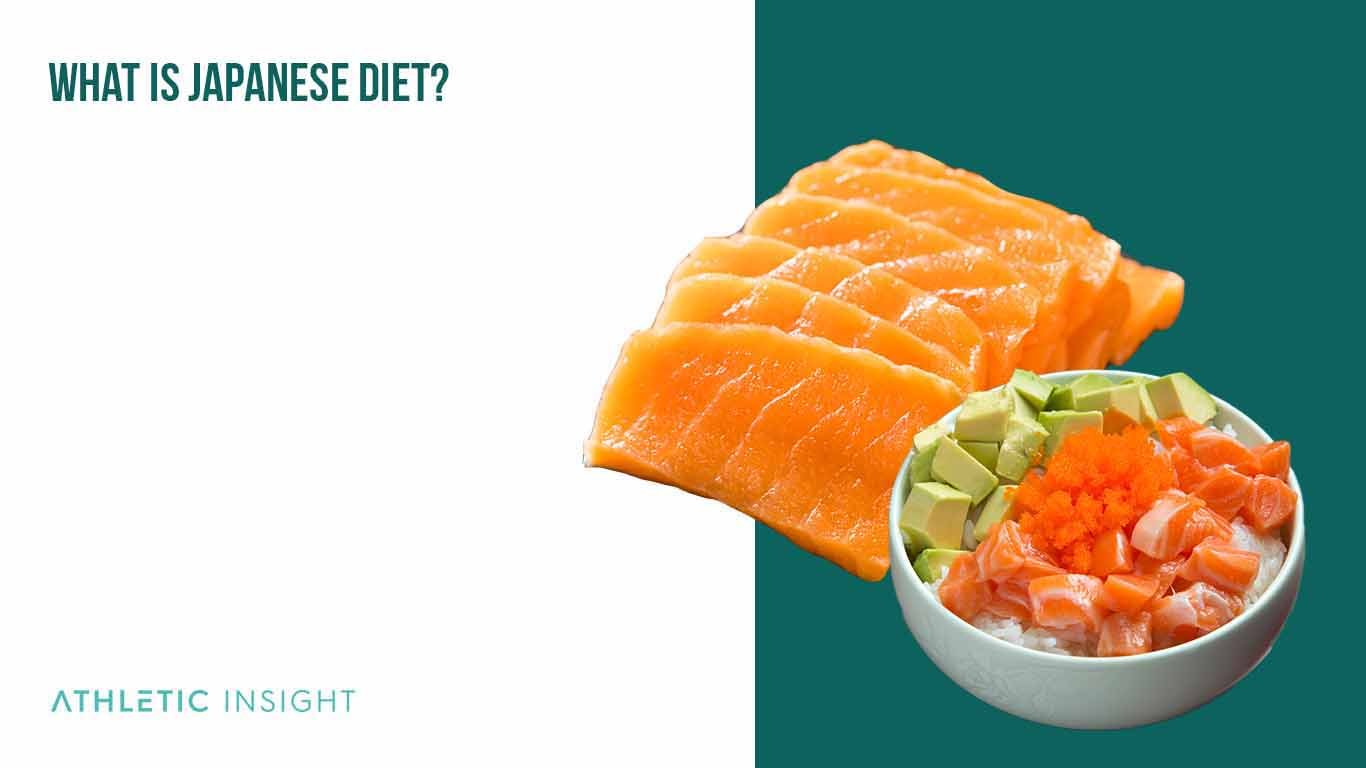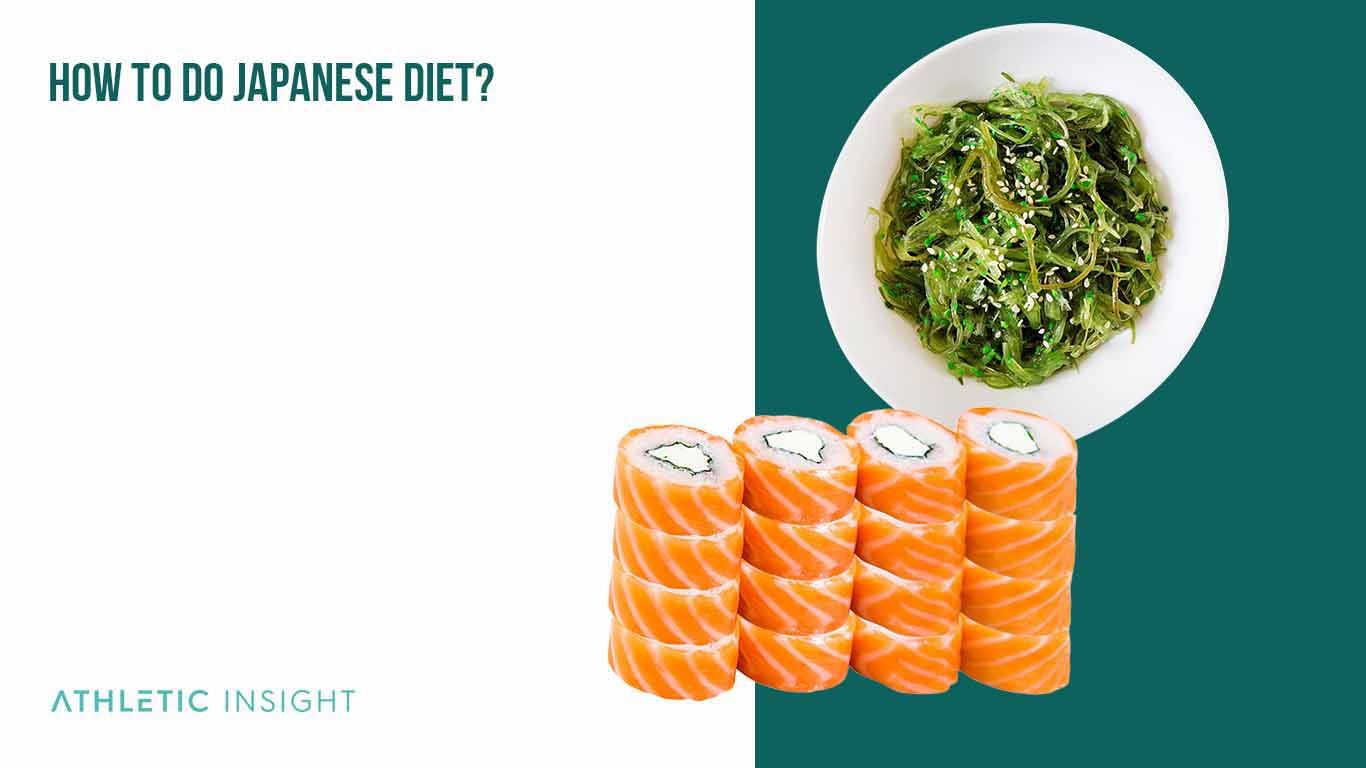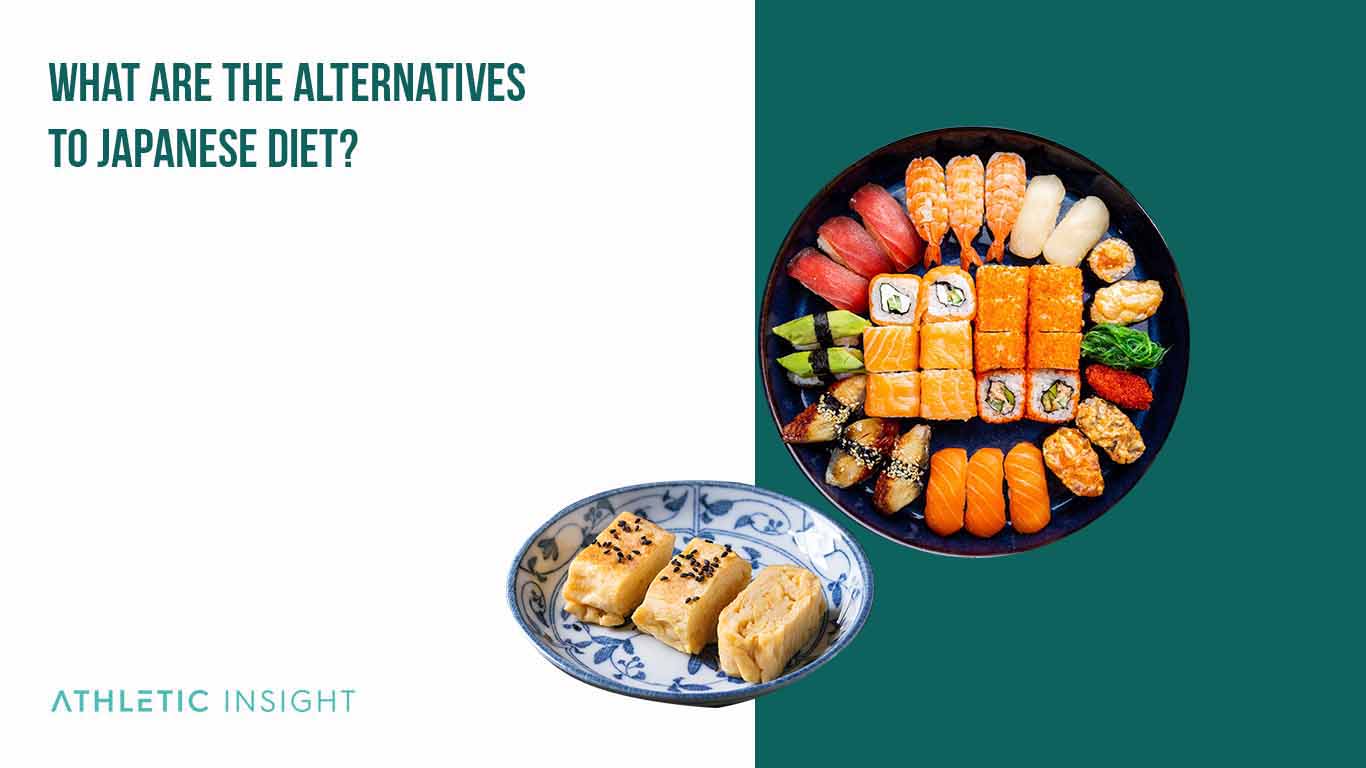The Japanese diet is a new diet that is rapidly gaining popularity among health-conscious individuals. It is based on the Japanese tradition of eating small meals throughout the day and focusing on foods with a high nutritional density.
The Japanese diet emphasizes healthy eating habits, such as eating in moderation and avoiding processed foods. Japanese diets are also known for their low-calorie content and high levels of antioxidants, making them an excellent choice for weight loss and overall health.
Unlike traditional western diets, the macrobiotic Japanese diet focuses on small meals eaten multiple times daily. Eating this way also helps curb cravings and overeating, allowing for sustained weight loss.
This combination of factors can have significant health benefits, including improved digestion, weight loss, better sleep, and other benefits. Keep reading to learn everything you need about the Japanese diet to decide if it is the proper diet for your health and fitness needs.
What is the Japanese Diet?
The Japanese Diet is the food, dishes, cooking, and eating style associated with Japan. Japanese cuisine is known for its use of high-quality ingredients, and Japanese diets emphasize healthy eating habits, such as eating in moderation and avoiding processed foods.

Japanese diets are also known for their low-calorie content and high levels of antioxidants, making them an excellent choice for weight loss and overall health. If you decide to follow the Japanese weight loss diet, you will not need to follow specific calorie counts or only at certain times of the day like many diet plans. Instead, your focus should be on adopting the cultural norms of Japanese dining, cooking, and eating.
Japanese culture has a healthy relationship with food, and Japanese cuisine is based on the principle of harmony between nature and people, which favors seasonal ingredients. Japanese diets focus on balance and moderation, as people prefer small meals eaten multiple times throughout the day, emphasizing nutrient-dense ingredients.
The typical Japanese diet also emphasizes Japanese cooking techniques, such as Japanese grilling and steaming, that maximize the health benefits of the food you consume while minimizing unhealthy fats and oils. Japanese diets also use Japanese condiments, such as miso, soy sauce, and fish sauce, to add flavor without adding unhealthy calories.
This combination of factors can have significant health benefits, including improved digestion, weight loss, better sleep, and other benefits.
How does the Japanese Diet Work?
The Japanese diet works by using high quality, unprocessed ingredients to give your body the nutrients and vitamins it needs to thrive. Japanese cuisine strongly emphasizes seasonal ingredients, which means that Japanese diets incorporate a variety of vegetables, fruits, and fish that are considered beneficial for health.
Japanese cooking techniques also minimize the use of unhealthy fats and oils. By using fresh food and minimizing fats and oils, your body will naturally lose weight and feel good.
The Japanese diet focuses on small meals eaten multiple times throughout the day, which helps promote a healthy relationship with food and is also beneficial for weight loss. Eating multiple small meals each day will help you feel full and prevent you from overeating.
What are the health benefits of the Japanese diet?
There are many different health benefits of the Japanese diet.
- Nutrient density: Japanese diets are known for their nutrient density, as Japanese cuisine emphasizes whole-natural foods packed with vitamins and minerals. Japanese diets also focus on seasonal produce, which helps maximize the food’s nutrient content. The high amount of fiber, calcium, magnesium, iron, potassium, and vitamins A, C, and E can help the cells in your body regenerate. The omega-3 fats in fish and seafood dishes encourage brain, eye, and cardiovascular health.
- Weight Loss: Japanese diets are renowned for controlling cravings and promoting weight loss. Japanese diets are lower in calories and higher in fiber and protein than other cuisines, which can help you feel full and satisfied after meals.
- Improved digestion: Japanese cuisine is known for its fermented foods, such as miso, natto, and kimchi. Fermentation increases the number of beneficial bacteria in your gut, which can help improve digestion and reduce inflammation. Japanese diets also use a variety of herbs to improve digestive health.
- Better sleep: Japanese cuisine is low in sugar and caffeine, which can help improve sleep quality. Japanese diets also emphasize the importance of timing meals and eating lighter dishes in the evening, which can help you relax before bed and get better sleep.
- Protect against chronic diseases: Japanese diets are rich in antioxidants, minerals, and omega-3 fatty acids, which can help protect against chronic diseases such as heart disease, cancer, and diabetes. Japanese diets also contain anti-inflammatory components, which can reduce inflammation and protect against chronic diseases.
- Longevity: Japanese diets have been linked to higher life expectancy due to the combination of Japanese dietary patterns and cultural norms.
Overall, Japanese diets can provide a range of benefits to your health and well-being. Japanese cuisine is delicious and nutritious, making it an excellent choice for maintaining a healthy lifestyle.
What are the health risks of the Japanese diet?
The health risks associated with the Japanese diet are minimal.
- Indigestion: If you are unfamiliar with Japanese food or are not used to eating things like seaweed, sushi, and Japanese pickles, Japanese cuisine can cause indigestion. However, if you stick with it, your body will quickly adjust to the diet.
- High Sodium Content: Japanese dishes often contain high sodium levels due to Japanese condiments like soy sauce, miso, and fish sauce. Too much sodium can increase your risk of high blood pressure and stroke. To reduce sodium intake, you can opt for low-sodium Japanese dishes and condiments.
Overall, Japanese diets are generally safe and healthy, but it is essential to be mindful of portion sizes and sodium levels.
How to do a Japanese Diet?
You can follow the Japanese diet by completing these four steps.

- Step 1: Identity what types of Japanese food you like. What are the dishes that include ingredients you enjoy eating? Japanese cuisine is vast and consists of a variety of dishes. Once you have identified Japanese dishes with ingredients that appeal to you, continue to incorporate them into your diet.
- Step 2: Incorporate Japanese cooking techniques and condiments. Japanese cuisine involves various cooking methods, such as Japanese grilling and steaming. Japanese condiments, such as miso, soy sauce, and fish sauce, add flavor without adding unhealthy calories.
- Step 3: Follow Japanese cultural norms around food. Japanese diets focus on balance and moderation, as people prefer small meals eaten multiple times throughout the day rather than two or three big meals.
- Step 4: Monitor your progress and adjust as needed. As you incorporate the Japanese diet into your life, monitor your feelings, energy levels, and overall health. Adjust as necessary to ensure you get the most out of the Japanese diet.
Since the Japanese diet is not focused on weight loss, there is no specific calorie count you should consume each day. Instead, focusing on the FDA guidelines of 2000-2500 calories per day would be best. If you want to lose weight, you can put yourself at a calorie deficit and consume 1600-2000 calories daily.
The ideal time frame for following the Japanese diet is long-term; Japanese diets are based on lifestyle changes rather than short-term dieting.
If you are ready to start implementing the Japanese diet, some best practices are avoiding processed foods as much as possible. Instead of buying prepackaged meals or items, do the preparation yourself. It takes longer, but the results are healthier.
Focus on enjoying your meals and taking your time. Eating slowly will help your body recognize its fullness, which can promote weight loss. Finally, incorporate Japanese culture into your food by adding Japanese cooking techniques and condiments.
What is the Best Duration for the Japanese Diet?
There are several different durations for the Japanese diet. You can try using it in the short run or the long run. These are several term diet examples.
2-Day Japanese diet
A two-day Japanese diet is a great way to experiment with this style. This choice is good if you are unfamiliar with Japanese food or don’t have access to Japanese food in your area. Two days is a short period, and it is not long enough for you to reap the health benefits of this diet. The only advantage of this diet is that it is short, and you don’t have to commit to many ingredients or a significant change in your eating style. This time is best for trying out the diet to see if it works for you.
7-Day Japanese diet
This diet is for those wanting to experience Japanese food for a more extended time. You will better understand Japanese cuisine after this amount of days. Seven days is reasonable if you feel comfortable cooking your food and can get the ingredients necessary for this diet. At the end of seven days, you will begin to see some benefits from the Japanese diet, which will be minimal.
14-Day Japanese diet
Finally, a 14-day Japanese diet is a good choice if you want to make Japanese cuisine a permanent part of your life. You can sample several Japanese dishes and learn Japanese cooking techniques during these two weeks. You will want to select this length of time if you feel confident cooking Japanese food and have access to Japanese restaurants. This length has the best chance of resulting in health benefits like improved digestion and weight loss.
What are the foods that you can eat while on a Japanese Diet?
These are some healthy foods you can eat on the Japanese diet.
- Fruits: Apples, Oranges, Watermelon
- Vegetables: Seaweed, pickled vegetables
- Grains: Rice, whole grain soba, ramen, and udon noodles
- Legumes: Black beans
- Nuts: Almonds, peanuts, cashews
- Seeds: Any seeds
- Healthy fats: Olive oil
- Proteins: Fish and seafood (served baked, grilled, or raw)
These foods are important because they provide essential vitamins and minerals. Japanese cuisine is known for its simplicity and high-quality ingredients, indispensable factors in leading a healthy lifestyle.
What are the foods that you should avoid while on a Japanese Diet?
These are some foods you should avoid while on the Japanese diet.
- Meat: red meat, beef, pork
- Poultry: chicken, duck
- Fish and shellfish:
- Meat-based ingredients:
- Eggs: boiled, fried
- Dairy products: butter, milk, cheese, yogurt, ice cream
In addition to these foods, the Japanese diet minimizes the number of baked goods and processed and sugary foods. Most Japanese desserts also use natural instead of proceed sugars to keep these unhealthy calories to a minimum.
The Japanese diet avoids these foods because they are high in sugar and fat, which can lead to weight gain, and are more challenging for your body to digest.
Who should do the Japanese diet?
People ready to commit to a lifestyle change rather than a short-term diet should do the Japanese diet. The Japanese diet is not just about what you eat; it’s about how you eat it, when you eat it, and how you cook it. A lot of work goes into following this diet, so the only people who should strongly consider it are people willing to align their lifestyle around it.
This diet is an excellent option for people who want a holistic change. If you wish to change your lifestyle to be healthier and are not focused on losing a certain amount of weight in a specific time, the Japanese diet is for you.
The final group of people who should do the Japanese diet is bodybuilders. Japanese food contains a lot of healthy proteins and fats, which are necessary for building muscle. Japanese cuisine is also very flavorful, making it an enjoyable way to build muscle. Finally, there are many different ways of eating lean protein to help repair your body after a workout. The Japanese bodybuilding diet is highly effective, safe, and a great way to build muscle mass.
How Easy is the Japanese Program to Follow?
The Japanese diet is easy to follow. There are many Japanese restaurants worldwide, and you can find many of these ingredients in your local grocery store. This diet becomes more challenging if you live in a smaller town that does not have access to Japanese food or if you intend to cook all of the food on your own. Mastering Japanese cooking techniques can be challenging to learn.
What is a Sample Japanese Diet Plan?
An example of a week’s worth of meals on the Japanese diet is included below.
Day 1
- Breakfast: green tea and a two-egg omelet
- Lunch: 2 hard boiled eggs with miso soup and seaweed salad
- Dinner: soba noodles in a seafood broth with grilled tuna
Day 2
- Breakfast: steamed rice with eggs and fish cakes
- Lunch: kale salad and boiled vegetables with pickled vegetables
- Dinner: udon noodle soup with grilled chicken and pickled vegetables
Day 3
- Breakfast: miso soup
- Lunch: steamed rice with an omelet and pickled fruit
- Dinner: dried trout with clam soup and marinated tofu
Day 4
- Breakfast: fresh fruit and green tea
- Lunch: rice balls wrapped in seaweed and a cooked vegetable salad
- Dinner: miso soup, sushi, and sashimi
Day 5
- Breakfast: steamed rice and miso soup
- Lunch: seaweed salad, edamame, and pickled ginger
- Dinner: steamed rice with ginger grilled chicken
Day 6
- Breakfast: udon noodle soup and a boiled egg
- Lunch: shiitake-mushroom soup with shrimp and pickled vegetables
- Dinner: seared scallops and steamed vegetables with steamed rice
Day 7
- Breakfast: two egg omelets with pickled vegetables and fresh food
- Lunch: miso soup and sushi
- Dinner: vegetable tempura and salmon sashimi with grilled vegetables and steamed priced
What are the Best Recipes for the Japanese Diet?
There are many different recipes you can use on the Japanese diet. These are some of the most popular.
- Crab rice with edamame and tobiko: This Japanese-style seafood dish uses cooked white rice mixed with edamame, which is low in fat but high in protein and vitamins.
- Barbecued salmon in wasabi and soy sauce: This Japanese-style salmon dish is a great way to get your omega-3 fatty acids and other vital vitamins.
- Sashimi with chili-lime dressing: This Japanese-style sashimi dish is a great way to get your essential fatty acids while still being light and healthy.
- Green tea beef yakitori with seasoned rice: This Japanese-style beef dish is a great way to get your protein while still enjoying the flavor of Japanese cuisine.
- Sake-poached chicken with soba noodles: Soba noodles are low in calories, and poaching chicken is a low-calorie method but still full of flavor.
What are the facts about the Japanese diet?
There are some critical facts that you should know about the Japanese diet, including what happens to your body, the weight loss results, health benefits, the number of meals, and the cooking styles used.
- The First Week: During the first week of the Japanese diet, your body will adjust to eating many small meals daily. You will not always be hungry, but your digestion will struggle a bit due to the new and different ingredients.
- Weight loss: Japanese diets work very well for weight loss because they are healthy and balanced. Japanese food is high in proteins, fiber, vitamins, and minerals. Because Japanese food is low in saturated fat and cholesterol, Japanese diets are very effective for weight loss.
- Health Benefits: Japanese diets are packed with antioxidants, vitamins, minerals, and other essential nutrients for good health. Japanese diets help reduce the risk of cancer, heart disease, stroke, and diabetes.
- Meals Per Day: While on the Japanese diet, you will eat 5-6 small meals daily.
- Cooking Styles: There are several different types of cooking styles you will need to master to use the Japanese diet, including deep-frying, boiling, steaming, grilling, and stir-frying.
How much does the Japanese Program cost?
Japanese ingredients can be expensive and you can expect to spend over $200 a week cooking. You will also need Japanese equipment to prepare the food if you do not already own such pieces of hardware.
What are the Alternatives to the Japanese Diet?
Some of the alternatives to the Japanese diet are the Mediterranean Diet, the Paleo diet, and the ketogenic diet.

- The Mediterranean Diet: The Mediterranean diet focuses on eating fresh fruits and vegetables, legumes, whole grains, fish, and healthy fats.
- The Paleo Diet: The paleo diet focuses on eating foods our ancestors ate during the Paleolithic era, such as meats, fish, vegetables, fruits, nuts, and seeds.
- The Ketogenic Diet: The ketogenic diet focuses on reducing the number of carbohydrates you eat and increasing the number of fats and proteins. This diet helps your body enter a state known as ketosis, which helps burn fat.
What does a Japanese Diet PDF Involve?
A Japanese Diet PDF includes all the information you need to get started with Japanese dietings, such as meal plans, recipes, and shopping lists.
How to Find a 3D Japanese Diet Printable Plan?
There are many sources available online that provide Japanese Diet printable plans. These plans offer all the information you need to start with Japanese dieting. The best way to find them is through a google search.



